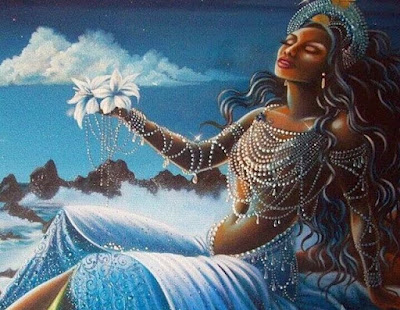Yemaya, also known as Yemoja or Iemanja, is an African water goddess.
Yemaya is worshipped across West Africa and the Caribbean as the mother of the sea and the moon.
She is the keeper of the feminine secrets and a protector of
women.
She assists in the conception of offspring and their births,
guarding and blessing newborns until they achieve adolescence.
She is a goddess of healing who shows compassion and charity
to people who are in need.
Yemaya, the goddess of rivers and bodies of water, is
frequently depicted as a mermaid.








